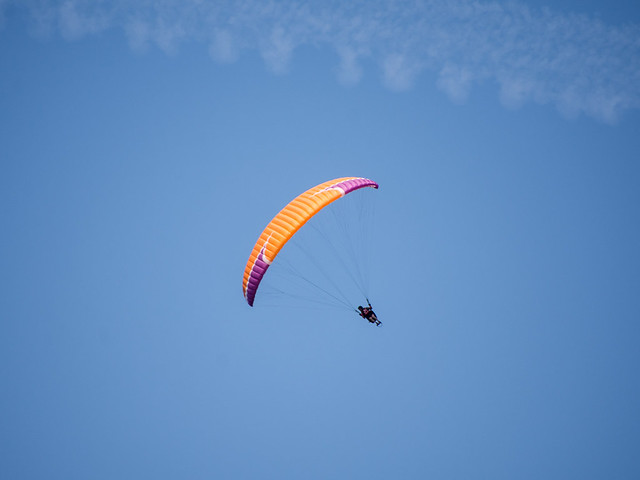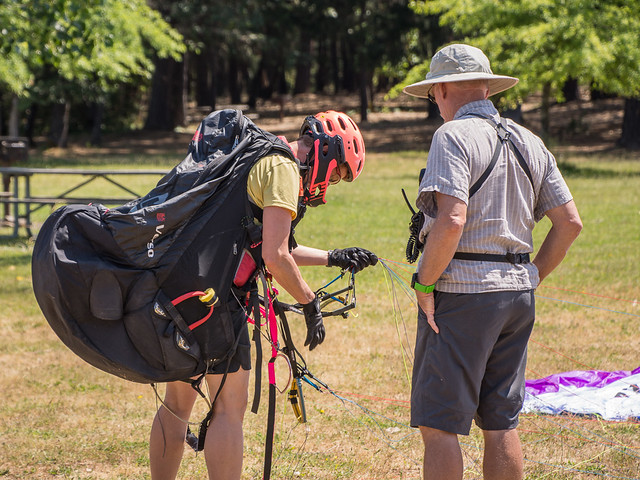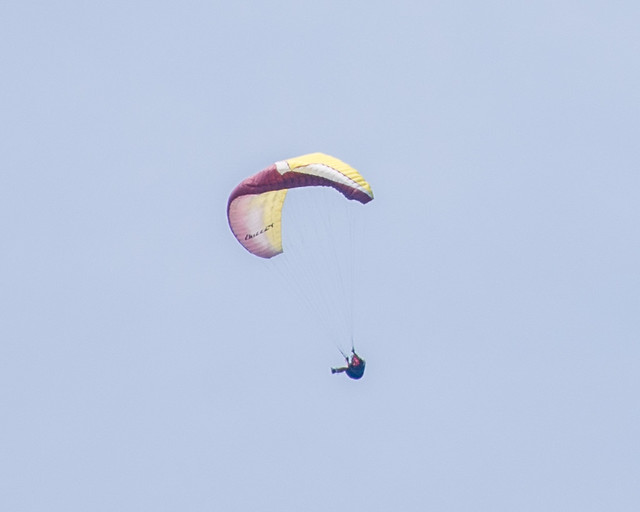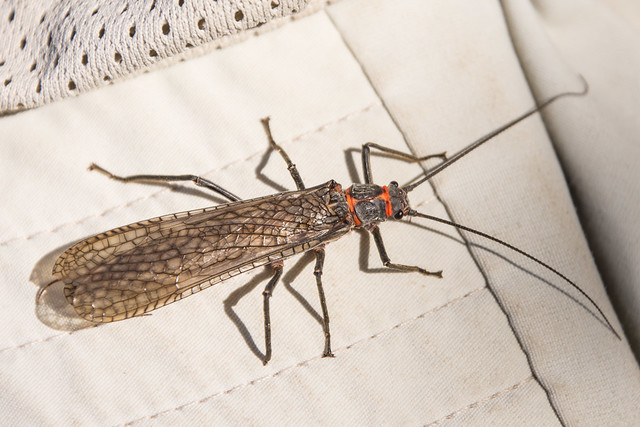"Practice makes perfect" always seems overly optimistic to me, like something from the sales department.

After the last week of instruction Shelley and I just got signed off on our P3 (intermediate) paragliding rating. I still feel like I have a lot to learn, but we've come a fair ways from our first shaky flights. (We actually weren't in a hurry to get our P3, we just wanted to continue to improve our skills so we could fly safer and more enjoyably.)
Paragliding hasn't come particularly "naturally" to me. It's been a while since I learned a new physical skill, and I've never really been into "flow" sports like skiing or white water kayaking. Climbing, despite its physical aspects, is more of a thinking game, and generally doesn't require fast reflexes. (Paragliding also has a big mental component, which is part of what I like) The closest for me would be mountain biking, and I was never particularly good at that!
After our Costa Rica trip, I was determined to put in the practice to get better at ground handling (aka kiting) which is key, especially to good launches. I tried to get out three times a week. Like many things, progress was slow and day to day it was hard to see much improvement. But after a while you realize that you actually are doing better than before. The winds in Saskatoon are seldom consistent and moderate - they tend to be either too calm or too fast or too gusty, or change direction every two minutes. This makes ground handling a challenge. At first we thought it was impossible! It was frustrating, but the challenging conditions are a benefit in the long run since real conditions are seldom perfect.
The last week of training has been great. We've practiced lots of skills and had good discussions of what can go wrong and how to handle it. We didn't get in a huge amount of actual flying, but that wasn't really the point. I did make it from Woodrat to the Longsword landing zone which was a minor achievement, although mostly luck in my launch timing that enabled me to catch a thermal right away and get enough height. The best part was that I could wait for Shelley in the winery tasting room :-)

One day of our training we did "maneuvers" over a lake, getting towed into the air by a boat. It was our first experience of towing, but we'd been doing lots of forward launches the last few days so that part went smoothly. The only trick was finding the right position when following the boat around turns. A bit like water skiing, you need to fly a wider turn than the boat to keep the tow rope tight.
With only three of us towing we had time to tow quite high, about 3000 ft (900m) over the lake. That gave us lots of time to do our maneuvers. We just did basic stuff like inducing asymmetric and frontal collapses. These weren't too scary since the gliders recover quickly (as they are designed to). Looking up at the wing while holding a big asymmetric was a little disconcerting since almost half your wing is just flapping loosely! We also practiced spirals - tight 360 turns where centrifugal force gets increasingly strong. I can't say I cared for this part. The speeds, forces, and angles are higher than normal flying and on top of nerves I started to feel somewhat queasy. But it was good to get a taste of it.

We had other fliers keeping us company - there were a bunch of these large (2 inches long without the antennas) insects around the lake. I'm not sure what they were.

For more of these photos see all 7 as a slideshow or overview

After the last week of instruction Shelley and I just got signed off on our P3 (intermediate) paragliding rating. I still feel like I have a lot to learn, but we've come a fair ways from our first shaky flights. (We actually weren't in a hurry to get our P3, we just wanted to continue to improve our skills so we could fly safer and more enjoyably.)
Paragliding hasn't come particularly "naturally" to me. It's been a while since I learned a new physical skill, and I've never really been into "flow" sports like skiing or white water kayaking. Climbing, despite its physical aspects, is more of a thinking game, and generally doesn't require fast reflexes. (Paragliding also has a big mental component, which is part of what I like) The closest for me would be mountain biking, and I was never particularly good at that!
After our Costa Rica trip, I was determined to put in the practice to get better at ground handling (aka kiting) which is key, especially to good launches. I tried to get out three times a week. Like many things, progress was slow and day to day it was hard to see much improvement. But after a while you realize that you actually are doing better than before. The winds in Saskatoon are seldom consistent and moderate - they tend to be either too calm or too fast or too gusty, or change direction every two minutes. This makes ground handling a challenge. At first we thought it was impossible! It was frustrating, but the challenging conditions are a benefit in the long run since real conditions are seldom perfect.
The last week of training has been great. We've practiced lots of skills and had good discussions of what can go wrong and how to handle it. We didn't get in a huge amount of actual flying, but that wasn't really the point. I did make it from Woodrat to the Longsword landing zone which was a minor achievement, although mostly luck in my launch timing that enabled me to catch a thermal right away and get enough height. The best part was that I could wait for Shelley in the winery tasting room :-)

One day of our training we did "maneuvers" over a lake, getting towed into the air by a boat. It was our first experience of towing, but we'd been doing lots of forward launches the last few days so that part went smoothly. The only trick was finding the right position when following the boat around turns. A bit like water skiing, you need to fly a wider turn than the boat to keep the tow rope tight.
With only three of us towing we had time to tow quite high, about 3000 ft (900m) over the lake. That gave us lots of time to do our maneuvers. We just did basic stuff like inducing asymmetric and frontal collapses. These weren't too scary since the gliders recover quickly (as they are designed to). Looking up at the wing while holding a big asymmetric was a little disconcerting since almost half your wing is just flapping loosely! We also practiced spirals - tight 360 turns where centrifugal force gets increasingly strong. I can't say I cared for this part. The speeds, forces, and angles are higher than normal flying and on top of nerves I started to feel somewhat queasy. But it was good to get a taste of it.

We had other fliers keeping us company - there were a bunch of these large (2 inches long without the antennas) insects around the lake. I'm not sure what they were.

For more of these photos see all 7 as a slideshow or overview
No comments:
Post a Comment